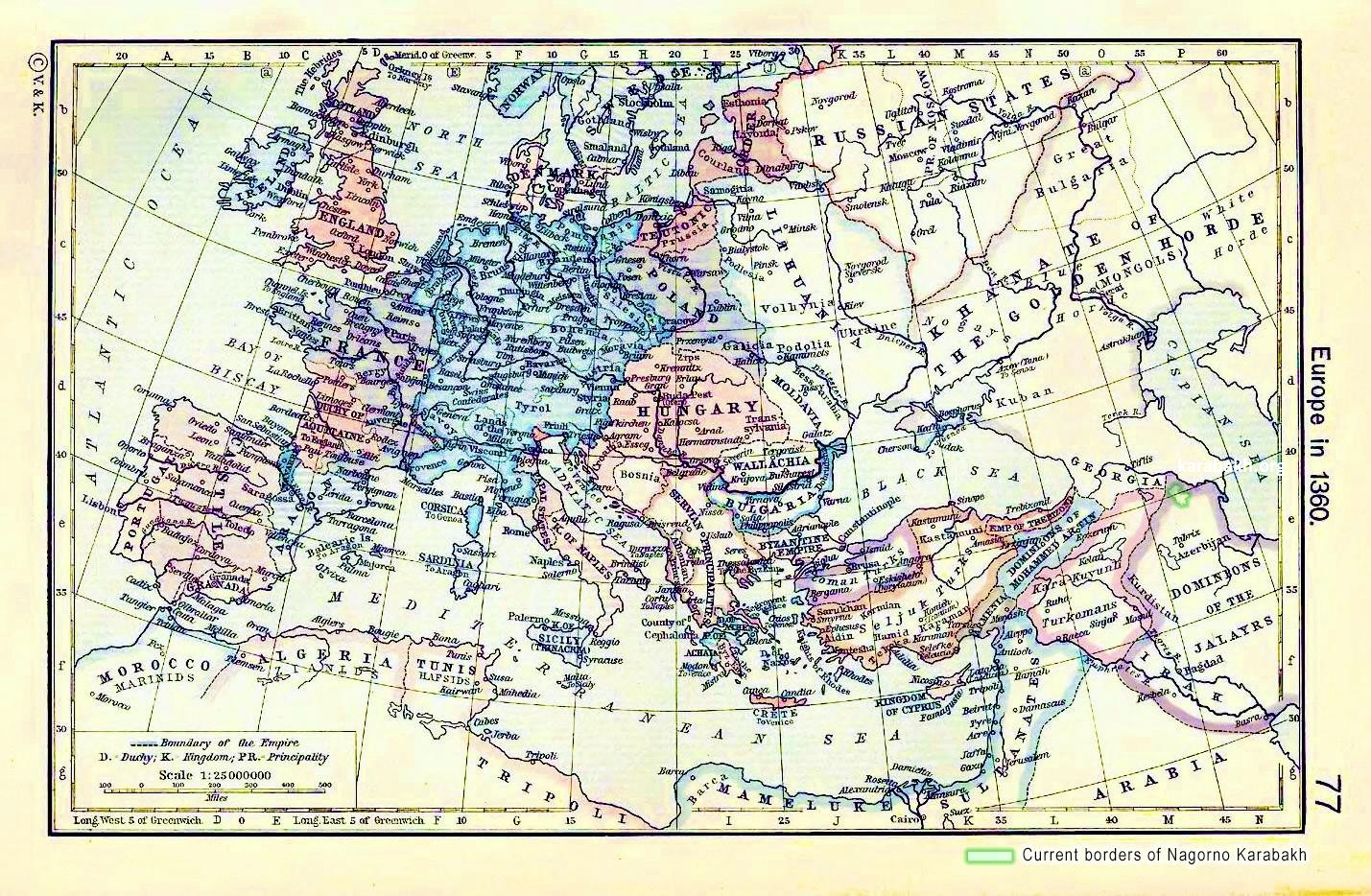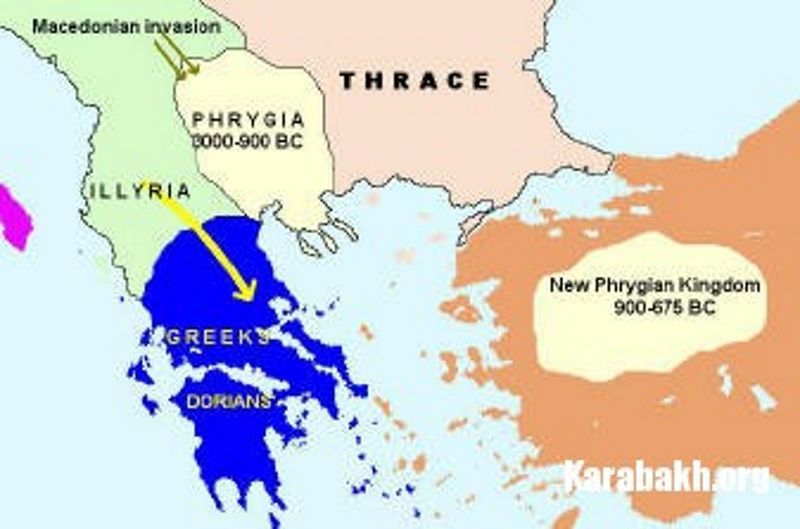Following the well-known decision of the Caucasus Bureau of the Central Committee of the RKP (b) about giving the mountainous portion of Karabakh autonomy, the Center carefully followed the smallest nuances in this direction. On May 22, 1922, Stalin in a letter to S. Kirov, the first secretary of the Central Committee of the Azerbaijan KP(b), inquired with sarcasm: “They say that ‘the true Karabakhite’ Fonshteyn represents Karabakh in the Central Executive Committee of Azerbaijan?” [13] In a response on June 18, Kirov explained to Stalin that someone had misinformed him and therefore listed by name the members of the Central Executive Committee from Karabakh. [14]
At the same time, while yielding to the Armenian demands, the Center made certain attempts not to allow the subordination of the party organization of Nagorno-Karabakh to the Azerbaijan party organization. In response to this, on August 1, 1922, Kirov and Matyushin, the chief of the organizational department, telegraphed to Moscow: “The territory of Karabakh is part of Azerbaijan and its party organization is thus part of the Azerbaijan Communist Party.” [15]
Following three years of preparatory work, the Central Executive Committee of Azerbaijan published a decree, on July 7, 1923, concerning the formation within Azerbaijan of the Autonomous Oblast of Nagorno-Karabakh. This marked the end of the struggle over the territorial membership of Nagorno-Karabakh, one that broke out in the first years of Soviet power in the Transcaucasus. N. Narimanov, having analyzed this process, on May 27, 1924, wrote to Stalin: “Nagorno-Karabakh under the intense pressure of Mirzoyan has been declared an autonomous oblast. While I was in power, this was not done not because I was against this autonomy, but simply because the Armenian peasants themselves did not want this. Mirzoyan at that time with the help of his Dashnak teachers prepared the groundwork for the creation of the autonomy and raised the question in the Transcaucasus kray committee” (Narimanov 1992, p. 59).
N. Narimanov very well understood that the misfortunes of Azerbaijan would not end with this. He foresaw that the offering of autonomy to Nagorno-Karabakh was not the end, but only the beginning of a great tragedy.
References
Melik-Shakhnazarov, G. (2008) “Politicization of History as a Source of Tension in Inter-Ethnic Relations,” Mayendorf Declaration of 2 November 2008 and the Situation Around Nagorno-Karabakh, a collection of articles, in Russian, Moscow.
Narimanov, N. (1992) On the History of Our Revolution in the Provinces. Letter to Stalin, Baku, 1992.
Zakharov, V.A. & S.T. Sarkisyan (2008) “Azerbaijan-Karabakh Conflict: Inception and present,” Mayendorf Declaration of 2 November 2008 and the Situation Around Nagorno-Karabakh, a collection of articles, in Russian, Moscow.
Notes
[1] Protocol No. 8 of the session of the Caucasus Bureau of the Central Committee of the RKP(b), 2-3 July 1921, Russian State Archive of Social-Political History (hereafter RSASPH), f. 64, op. 1, d. 1, l. 87-88; Protocol No. 8 of the session of the Caucasus Bureau of the Central Committee of the RKP with the representatives of local party and professional organizations, 2-3 July 1921, RSASPH, f. 85, op. 18, d. 59, l. 14.
[2] Protocol No. 8 of the session of the Caucasus Bureau of the Central Committee of the RKP with the representatives of local party and professional organizations, 2-3 July 1921, RSASPH, f. 85, op. 18, d. 59, l. 12, 14.
[3] Letter of A. Bekzadyan to G. Chicherin, 15 April 1921, Foreign Policy Archive of Russian Federation (hereafter FPA RF), f. 04, op. 39, p. 232, d. 53001, l. 58-59.
[4] Letter of A. Bekzadyan to G. Chicherin, 15 April 1921, Foreign Policy Archive of Russian Federation (hereafter FPA RF), f. 04, op. 39, p. 232, d. 53001, l. 62.
[5] Letter of G. Chicherin to Ter-Gabrielyan, 21 April 1921, FPA RF, f. 04, op. 39, p. 232, d. 53001, l. 63.
[6] Telegram of G. Chicerin to B. Legran, 22 April 1921, FPA RF, f. 04, op. 39, p. 232, d. 53001, l. 65.
[7] Conversation of A. Myasnikov by direct line with G. Ordzhonikidze, August 1921, RSASPH, f. 85, op. 18, d. 177, l. 4.
[8] Protocol of the session of the Central Executive Committee of Azerbaijan, 19 July 1921, RSASPH, f. 64, op. 1, d. 31, l. 122.
[9] Protocol No. 22 of the session of the Political and Organizational Bureau of the Central Committee of the KP(b) of Azerbaijan, 20 July 1921, Political Documents Archive under the President of Azerbaijan Republic (hereafter PDA PAR), f. 1, op. 2, d. 18, l. 94; RSASPH, f. 64, op. 1, d. 92, l. 51.
[10] Protocol of the Extraordinary Congress of Soviets of the second section of the Shusha district, 1 August 1921, PDA PAR, f. 1, op. 2, d. 18, l. 120-120 ob.
[11] Report of L. Mirzoyan to the Central Committee of the AKP (copy to the Caucasus Bureau of the Central Committee of the RKP) about a visit to the mountainous part of Karabakh, 3 August 1921, RSASPH, f. 84, op. 1, d. 95, l. 3 ob.
[12] See the Information of the Secretary of the Caucasus Bureau of the Central Committee of the RKP Figatner to Kirov, August 1921, PDA PAR, f. 1, op. 129, d. 107, l. 58.
[13] Letter of I. Stalin about the situation in the Communist Party of Azerbaijan and about the representation of Karabakh in the Central Executive Committee of Azerbaijan, 22 May 1922, RSASPH, f. 558, op. 11, d. 746, l. 1.
[14] Secret letter of S. Kirov to I. Stalin, 18 June 1922, RSASPH, f. 558, op. 11, d. 746, l. 2.
[15] Telegram of Kirov and Matyushin to the Central Committee of the RKP(b), 1 August 1922, RSASPH, f. 80, op. 25, d. 2, l. 1.





